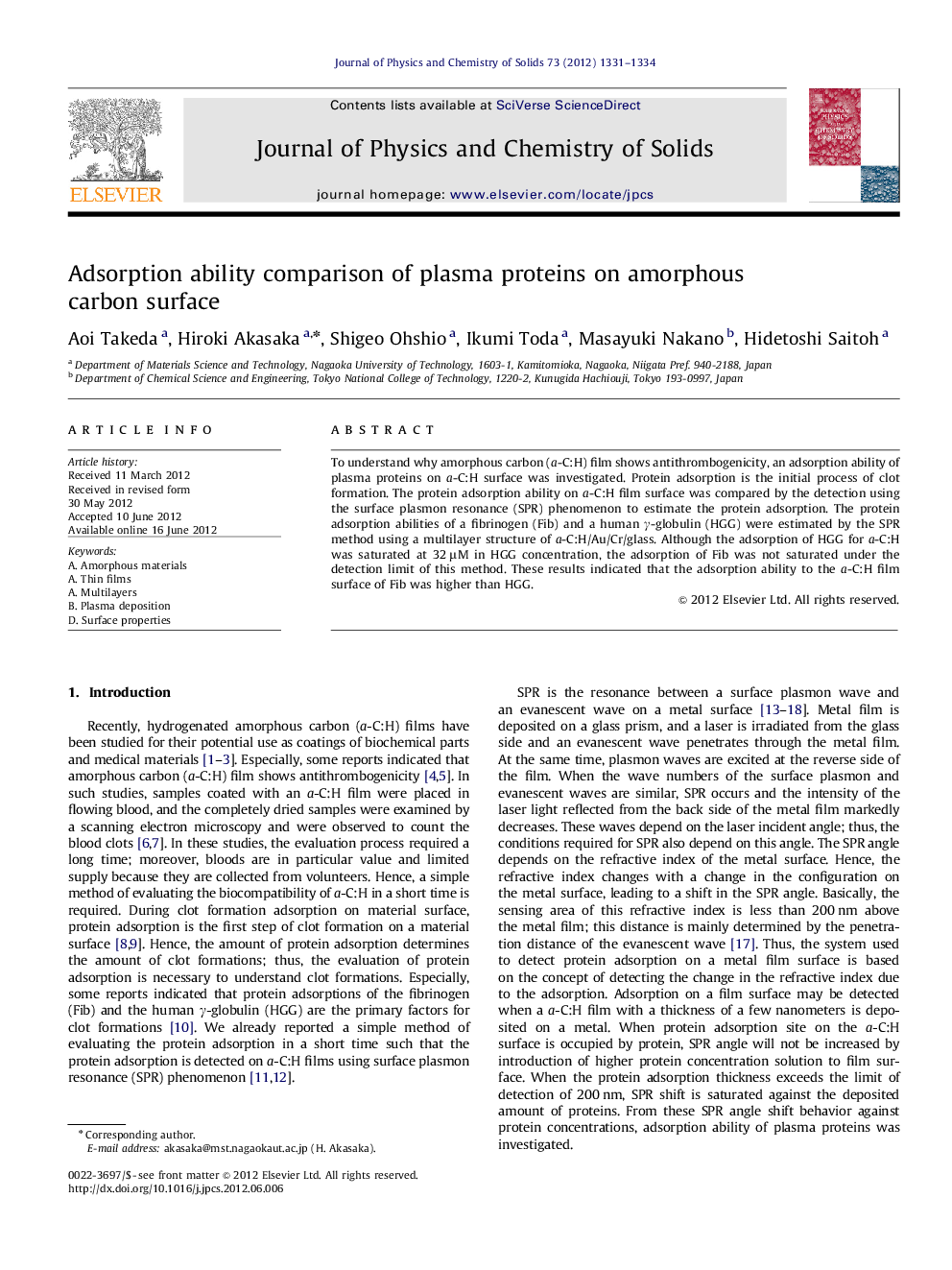| Article ID | Journal | Published Year | Pages | File Type |
|---|---|---|---|---|
| 1516495 | Journal of Physics and Chemistry of Solids | 2012 | 4 Pages |
To understand why amorphous carbon (a-C:H) film shows antithrombogenicity, an adsorption ability of plasma proteins on a-C:H surface was investigated. Protein adsorption is the initial process of clot formation. The protein adsorption ability on a-C:H film surface was compared by the detection using the surface plasmon resonance (SPR) phenomenon to estimate the protein adsorption. The protein adsorption abilities of a fibrinogen (Fib) and a human γ-globulin (HGG) were estimated by the SPR method using a multilayer structure of a-C:H/Au/Cr/glass. Although the adsorption of HGG for a-C:H was saturated at 32 μM in HGG concentration, the adsorption of Fib was not saturated under the detection limit of this method. These results indicated that the adsorption ability to the a-C:H film surface of Fib was higher than HGG.
► The plasma protein adsorption ability of amorphous carbon surface was compared. ► The ability was estimated using SPR phenomenon. ► Fib and HGG were used as plasma protein which is cause for clot formation. ► Fibs were adsorbed exceeding the sensing area for SPR phenomenon. ► The adsorption ability to the a-C:H film surface of Fib was higher than HGG.
